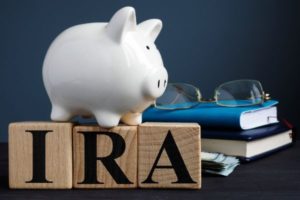Many older Americans who experience financial turmoil try to solve their problems and avoid bankruptcy by using funds from their retirement accounts. But this isn’t the wisest move. Many people still end up filing for bankruptcy, with the result that they unnecessarily use retirement accounts, protected in bankruptcy, to repay debts that are dischargeable in bankruptcy. This is an unnecessary waste of a debtor’s valuable income. Debtors optimize the fresh start provided by bankruptcy by keeping their retirement accounts intact prior to filing bankruptcy.
ERISA was enacted in 1974 to regulate and protect the retirement benefits of employees in the private sector. ERISA applies to most employer-sponsored plans, such as 401(k)s. Government employee plans and IRAs are exempt from ERISA coverage. ERISA regulates the conduct of plan fiduciaries and subjects their conduct and actions to certain standards and rules. Generally, retirement accounts that qualify under ERISA are protected from the reach of creditors.
ERISA may cover both defined-benefit and defined-contribution plans offered by employers. Some examples of employer-sponsored retirement accounts covered by ERISA include 401(k) plans, pensions, deferred-compensation plans, and profit-sharing plans. ERISA does not cover retirement plans created and administered by government entities and churches, such as 403(b) plans. Also, ERISA doesn’t apply to simplified employee pensions (SEPs) or IRAs.
The following non-ERISA plans are protected by federal bankruptcy law:
- IRA;
- Roth IRA;
- SEP-IRA for small business owners;
- SIMPLE IRA for self-employed individuals; and
- Other similar retirement plans.
Unlike ERISA plans, the protection for traditional and Roth IRAs is capped at $1,362,800 for cases filed between April 1, 2019, and March 31, 2022. For more than one traditional or Roth IRA, only $1,362,800 combined, rather than per account, may be claimed. Anything over $1,362,800 becomes part of a debtor’s bankruptcy estate and may be used to repay creditors. The cap on these benefits is adjusted every three years for inflation and will adjust next on April 1, 2022.
Despite most retirement accounts being safe from the reach of creditors in a bankruptcy case, there are a few exceptions. Once money is withdrawn from a retirement plan, the protection of the exemption is no longer effective since it applies to money in an account. Also, the IRS may reach retirement assets with a valid tax lien.
Theron Morrison and the team of bankruptcy attorneys at the Morrison Law Group have helped countless bankruptcy debtors protect their retirement benefits in bankruptcy and gain a fresh start. Call the Morrison Law Group at 801.456.9933 today to schedule a FREE consultation. We are Utah’s only statewide bankruptcy law firm and have locations in Ogden, Logan, Sandy, and St. George to serve the residents of the counties of Weber, Cache, Salt Lake, Utah, Morgan, Davis, Washington, and surrounding areas.



